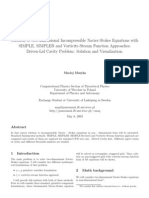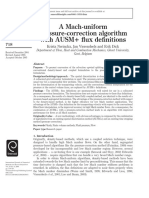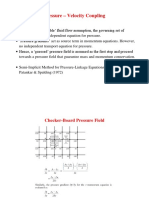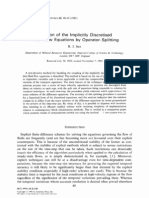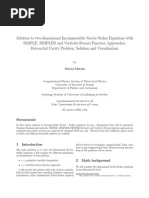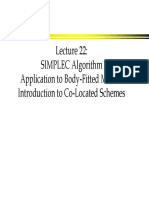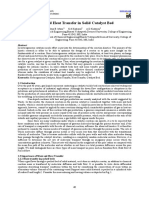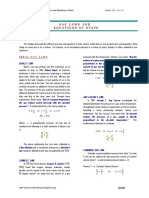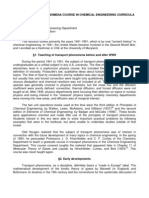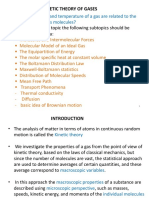0% found this document useful (0 votes)
131 views32 pagesPeric Lectures
- The document describes the SIMPLE, SIMPLEC, PISO, and SIMPLER algorithms for solving the Navier-Stokes equations for incompressible flows on polyhedral grids. These algorithms use pressure-correction schemes to enforce mass conservation by correcting velocities and pressure.
- It also discusses applying pressure-based algorithms like SIMPLE to compressible flows by additionally solving the energy equation and using the equation of state to update density based on pressure and temperature.
Uploaded by
luis_rcm161405Copyright
© © All Rights Reserved
We take content rights seriously. If you suspect this is your content, claim it here.
Available Formats
Download as PDF, TXT or read online on Scribd
0% found this document useful (0 votes)
131 views32 pagesPeric Lectures
- The document describes the SIMPLE, SIMPLEC, PISO, and SIMPLER algorithms for solving the Navier-Stokes equations for incompressible flows on polyhedral grids. These algorithms use pressure-correction schemes to enforce mass conservation by correcting velocities and pressure.
- It also discusses applying pressure-based algorithms like SIMPLE to compressible flows by additionally solving the energy equation and using the equation of state to update density based on pressure and temperature.
Uploaded by
luis_rcm161405Copyright
© © All Rights Reserved
We take content rights seriously. If you suspect this is your content, claim it here.
Available Formats
Download as PDF, TXT or read online on Scribd
/ 32












